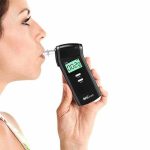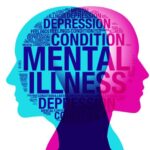The Most Common 100 Medical Terminology and Their Meanings

Medical terminology refers to the specialized language used by healthcare professionals to communicate information about diseases, medical procedures, anatomy, physiology, and pharmacology. Medical terms are often made up of multiple words and can be derived from Latin or Greek roots. Understanding medical terminology is essential for healthcare professionals to accurately convey information about patient conditions and treatments.
Medical terminology has a long and complex history that dates back to ancient civilizations. The ancient Greeks and Romans were among the first to develop a system of medical terminology, using terms derived from their own languages to describe medical conditions, procedures, and anatomy.
During the Middle Ages, medical terminology was heavily influenced by Arabic, as many medical texts were translated from Arabic into Latin and other European languages. In the Renaissance, Latin became the dominant language of medicine, and many medical terms that are still in use today were coined during this period.
In the 19th century, the development of modern medical science and technology led to the creation of many new medical terms. At the same time, advances in medical education and the standardization of medical terminology helped to improve communication among healthcare professionals.
Today, medical terminology continues to evolve as new discoveries are made and new technologies are developed. The use of standardized medical terminology is essential for accurate communication and understanding among healthcare professionals, as well as for the effective treatment of patients. In this article, we shall be discussing the top 100 medical terminologies and their meanings.
The Most Common 100 Medical Terminology and Their Meanings
Here are 100 commonly used medical terminologies and their meanings:
| 1. | Abdomen – The area of the body between the chest and the pelvis. |
| 2. | Acute – A condition or illness that has a sudden onset and is severe in nature. |
| 3. | Anemia – A condition in which the body lacks enough red blood cells or hemoglobin to carry oxygen to the body’s tissues. |
| 4. | Antibiotic – A medication used to treat bacterial infections. |
| 5. | Arthritis – A group of conditions that cause joint inflammation and pain. |
| 6. | Asymptomatic – A condition or disease that presents no symptoms. |
| 7. | Atherosclerosis – A condition in which fatty deposits, cholesterol, and other substances build up in the walls of arteries, leading to restricted blood flow. |
| 8. | Benign – A non-cancerous growth or tumor. |
| 9. | Biopsy – The removal of a small amount of tissue from the body for examination. |
| 10. | Bronchitis – An inflammation of the bronchial tubes in the lungs, often caused by a viral or bacterial infection. |
| 11. | Cardiology – The study of the heart and its function. |
| 12. | Carpal tunnel syndrome – A condition in which the median nerve in the wrist is compressed, causing pain, numbness, and weakness in the hand. |
| 13. | Cataract – A clouding of the eye’s natural lens that affects vision. |
| 14. | Chemotherapy – The use of drugs to treat cancer. |
| 15. | Chronic – A condition or illness that lasts for a long period of time, often for years or a lifetime. |
| 16. | Cirrhosis – A chronic liver disease characterized by scarring and damage to the liver tissue. |
| 17. | Colonoscopy – A procedure in which a flexible tube with a camera is inserted into the colon to examine it for abnormalities. |
| 18. | Congenital – A condition or abnormality that is present at birth. |
| 19. | Dementia – A group of symptoms that affect memory, thinking, and social abilities, often caused by a brain disease or injury. |
| 20. | Depression – A mood disorder characterized by feelings of sadness, hopelessness, and lack of interest in activities. |
| 21. | Diabetes – A metabolic disorder characterized by high blood sugar levels due to inadequate insulin production or insulin resistance. |
| 22. | Diarrhea – A condition in which a person has loose, watery bowel movements. |
| 23. | Dysphagia – Difficulty swallowing. |
| 24. | Dyspnea – Shortness of breath or difficulty breathing. |
| 25. | Eczema – A chronic skin condition characterized by dry, itchy, and inflamed skin. |
| 26. | Electrocardiogram (ECG or EKG) – A test that measures the electrical activity of the heart. |
| 27. | Endometriosis – A condition in which the tissue that lines the uterus grows outside of it, causing pain and other symptoms. |
| 28. | Endoscopy – A procedure that uses a flexible tube with a camera to examine the inside of the body. |
| 29. | Epilepsy – A neurological disorder characterized by recurrent seizures or convulsions. |
| 30. | Fibromyalgia – A chronic pain condition that affects muscles and soft tissues. |
| 31. | Fracture – A break in a bone. |
| 32. | Gastroenterology – The study of the digestive system and its disorders. |
| 33. | Gastroesophageal reflux disease (GERD) – A condition in which stomach acid flows back into the esophagus, causing heartburn and other symptoms. |
| 34. | Glaucoma – A group of eye diseases that damage the optic nerve, leading to vision loss and blindness. |
| 35. | Hematology – The study of blood and blood disorders. |
| 36. | Hemorrhage – Abnormal bleeding, often caused by injury or disease. |
| 37. | Hepatitis – Inflammation of the liver, often caused by a viral infection or other factors. 38. Hypertension – High blood pressure, a condition in which the force of blood against the artery walls is too high. |
| 39. | Hyperthyroidism – A condition in which the thyroid gland produces too much thyroid hormone, leading to an overactive metabolism. |
| 40. | Hypothyroidism – A condition in which the thyroid gland produces too little thyroid hormone, leading to an underactive metabolism. |
| 41. | Immunology – The study of the immune system and its disorders. |
| 42. | Infection – The invasion of the body by harmful microorganisms, such as bacteria, viruses, or fungi. |
| 43. | Inflammation – A localized response to injury or infection characterized by redness, swelling, pain, and heat. |
| 44. | Insomnia – A sleep disorder characterized by difficulty falling or staying asleep. |
| 45. | Intubation – The insertion of a tube into the trachea to assist with breathing. |
| 46. | Jaundice – A condition in which the skin and whites of the eyes turn yellow due to excess bilirubin in the blood. |
| 47. | Kidney stones – Small, hard mineral deposits that form in the kidneys and can cause severe pain when passing through the urinary tract. |
| 48. | Leukemia – A cancer of the blood or bone marrow characterized by the overproduction of white blood cells. |
| 49. | Magnetic resonance imaging (MRI) – A diagnostic imaging technique that uses a magnetic field and radio waves to produce detailed images of the body’s internal structures. |
| 50. | Mammography – A diagnostic imaging test that uses low-dose X-rays to examine the breast tissue for abnormalities. |
| 51. | Melanoma – A type of skin cancer that develops in the melanocytes, the cells that produce pigment in the skin. |
| 52. | Meningitis – Inflammation of the membranes that surround the brain and spinal cord, often caused by a bacterial or viral infection. |
| 53. | Menopause – The cessation of menstruation and the end of reproductive function in women. |
| 54. | Metastasis – The spread of cancer from one part of the body to another. |
| 55. | Migraine – A severe headache characterized by throbbing pain on one side of the head, often accompanied by other symptoms such as nausea and sensitivity to light and sound. |
| 56. | Multiple sclerosis (MS) – A chronic neurological disorder characterized by damage to the myelin sheath that surrounds nerve fibers in the central nervous system. |
| 57. | Myocardial infarction – Heart attack, occurs when blood flow to the heart is blocked, causing damage to the heart muscle. |
| 58. | Nephrology – The study of the kidneys and their function. |
| 59. | Neurology – The study of the nervous system and its disorders. |
| 60. | Obstetrics – The branch of medicine that deals with pregnancy, childbirth, and postpartum care. |
| 61. | Oncology – The study and treatment of cancer. |
| 62. | Ophthalmology – The study of the eye and its disorders. |
| 63. | Osteoporosis – A condition in which the bones become weak and fragile, increasing the risk of fractures. |
| 64. | Otology – The study of the ear and its disorders. |
| 65. | Pap smear – A screening test for cervical cancer that involves collecting cells from the cervix for examination. |
| 66. | Parkinson’s disease – A progressive neurological disorder characterized by tremors, stiffness, and difficulty with coordination and movement. |
| 67. | Pediatrics – The branch of medicine that deals with the medical care of infants, children, and adolescents. |
| 68. | Pneumonia – An inflammation of the lungs that can be caused by bacterial, viral, or fungal infection. |
| 69. | Psychiatry – The branch of medicine that deals with the diagnosis and treatment of mental disorders. |
| 70. | Psychology – The scientific study of human behavior and mental processes. |
| 71. | Pulmonary embolism – A blockage of a pulmonary artery by a blood clot, which can cause chest pain, shortness of breath, and other symptoms. 72. Radiology – The branch of medicine that uses imaging techniques, such as X-rays and CT scans, to diagnose and treat disease. |
| 73. | Rheumatology – The study and treatment of rheumatic diseases, which affect the joints, muscles, and bones. |
| 74. | Schizophrenia – A severe mental disorder characterized by delusions, hallucinations, and disordered thinking and behavior. |
| 75. | Scoliosis – A curvature of the spine that can cause back pain and other symptoms. |
| 76. | Septicemia – A life-threatening infection that occurs when bacteria or other pathogens enter the bloodstream. |
| 77. | Sleep apnea – A sleep disorder characterized by pauses in breathing or shallow breaths during sleep. |
| 78. | Spinal cord injury – Damage to the spinal cord that can cause paralysis or other neurological deficits. |
| 79. | Stroke – A condition in which blood flow to the brain is interrupted, causing damage to brain tissue and neurological deficits. |
| 80. | Substance abuse – The excessive use of drugs or alcohol that can lead to physical and mental health problems. |
| 81. | Surgery – The branch of medicine that involves the use of operative techniques to treat disease or injury. |
| 82. | Systemic lupus erythematosus (SLE) – An autoimmune disease that can affect multiple organs and tissues in the body. |
| 83. | Thyroid nodules – Abnormal growths or lumps in the thyroid gland that can be benign or malignant. |
| 84. | Transfusion – The transfer of blood or blood components from one person to another. |
| 85. | Transplantation – The transfer of cells, tissues, or organs from one person to another to replace damaged or diseased tissue. |
| 86. | Tuberculosis (TB) – An infectious disease caused by the bacterium Mycobacterium tuberculosis that primarily affects the lungs. |
| 87. | Ultrasound – A diagnostic imaging technique that uses high-frequency sound waves to produce images of internal organs and tissues. |
| 88. | Urology – The study of the urinary tract and male reproductive system. |
| 89. | Varicose veins – Abnormally swollen, twisted veins that can be painful and unsightly. |
| 90. | Ventilation – The process of delivering air or oxygen to the lungs to assist with breathing. |
| 91. | Viral hepatitis – Inflammation of the liver caused by a viral infection. |
| 92. | Vital signs – The basic physiological measurements that indicate the functioning of the body, including temperature, pulse rate, respiratory rate, and blood pressure. |
| 93. | X-ray – A diagnostic imaging technique that uses ionizing radiation to produce images of internal structures. |
| 94. | Yeast infection – A common fungal infection that can occur in various parts of the body, such as the mouth, vagina, or skin folds. |
| 95. | Zika virus – A viral infection that is transmitted by mosquitoes and can cause mild symptoms in most people, but can lead to severe birth defects in pregnant women. |
| 96. | Zoonosis – An infectious disease that can be transmitted from animals to humans. |
| 97. | Endocrinology – The study of hormones and their role in the regulation of bodily functions. |
| 98. | Hematology – The study of blood and blood-forming tissues. |
| 99. | Microbiology – The study of microorganisms, including bacteria, viruses, fungi, and parasites. |
| 100. | Pharmacology – The study of drugs and their effects on the body. |





